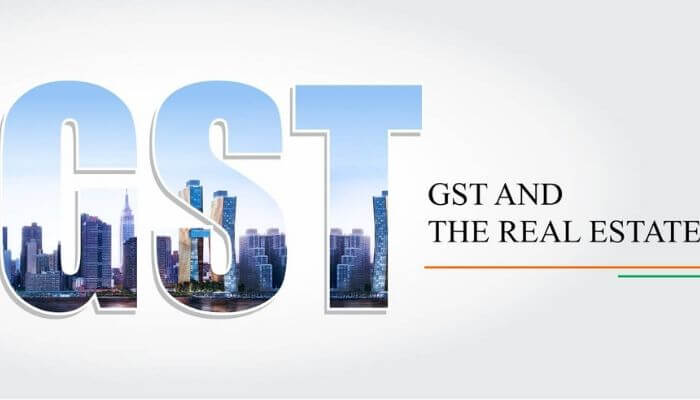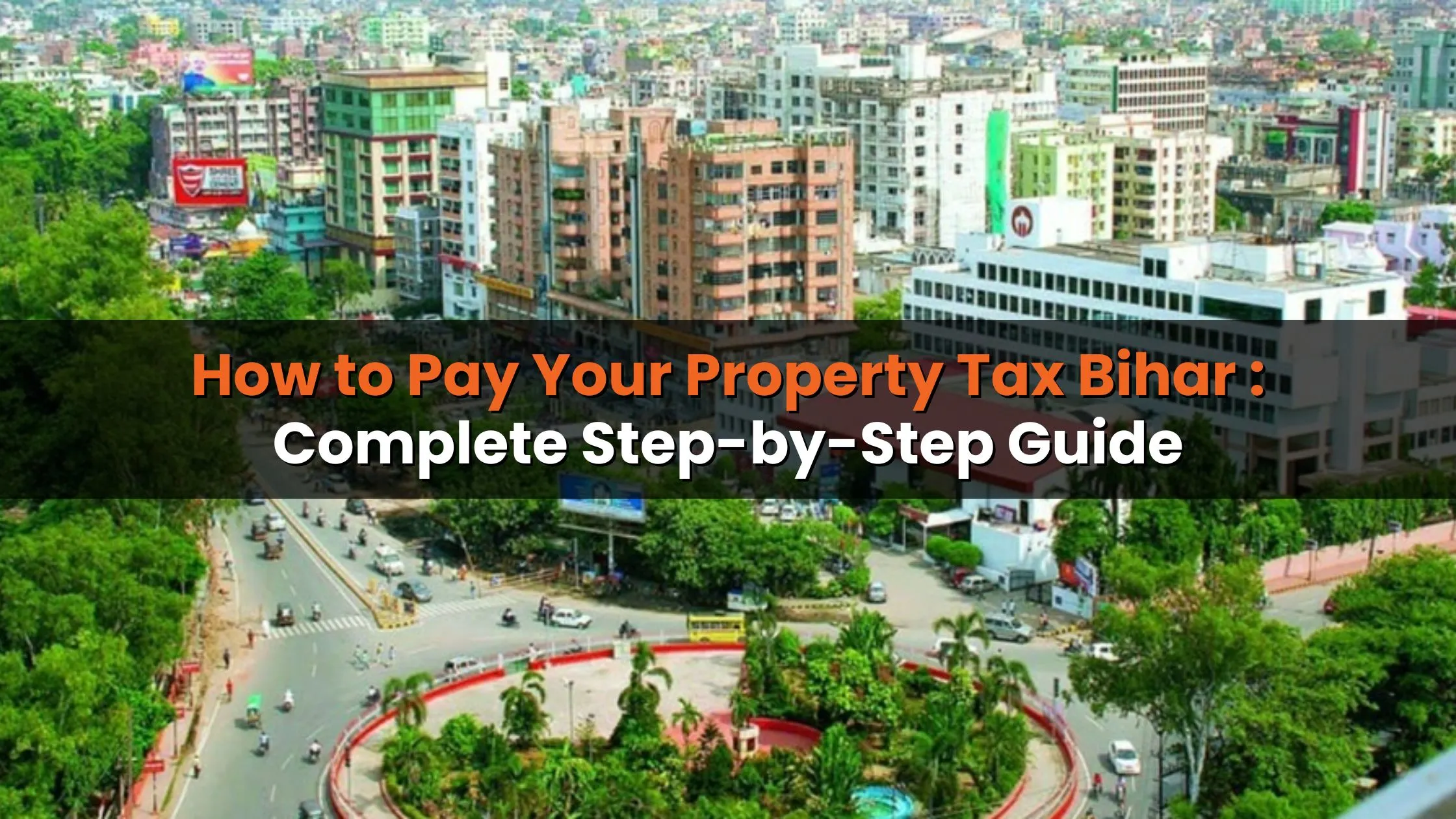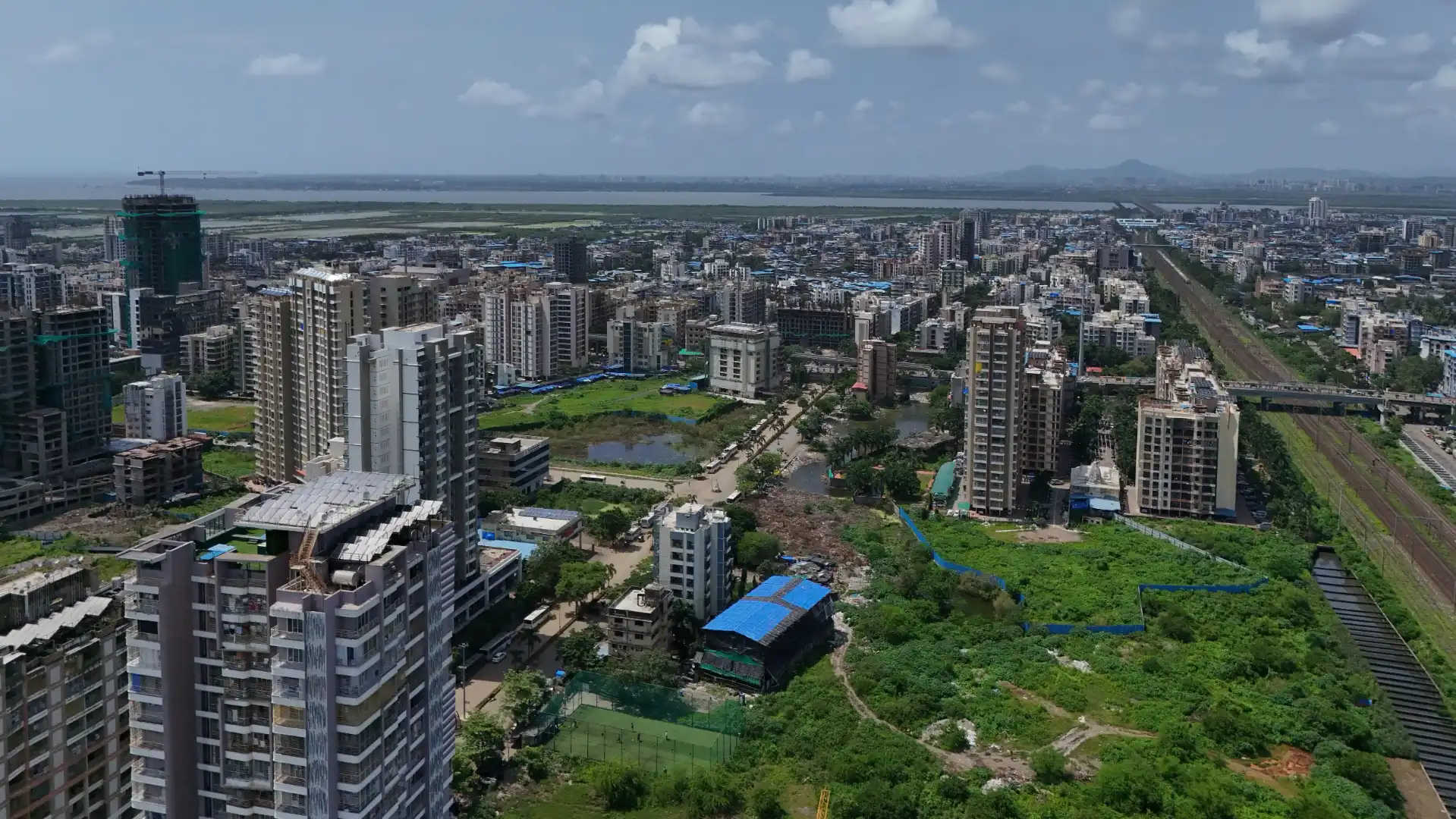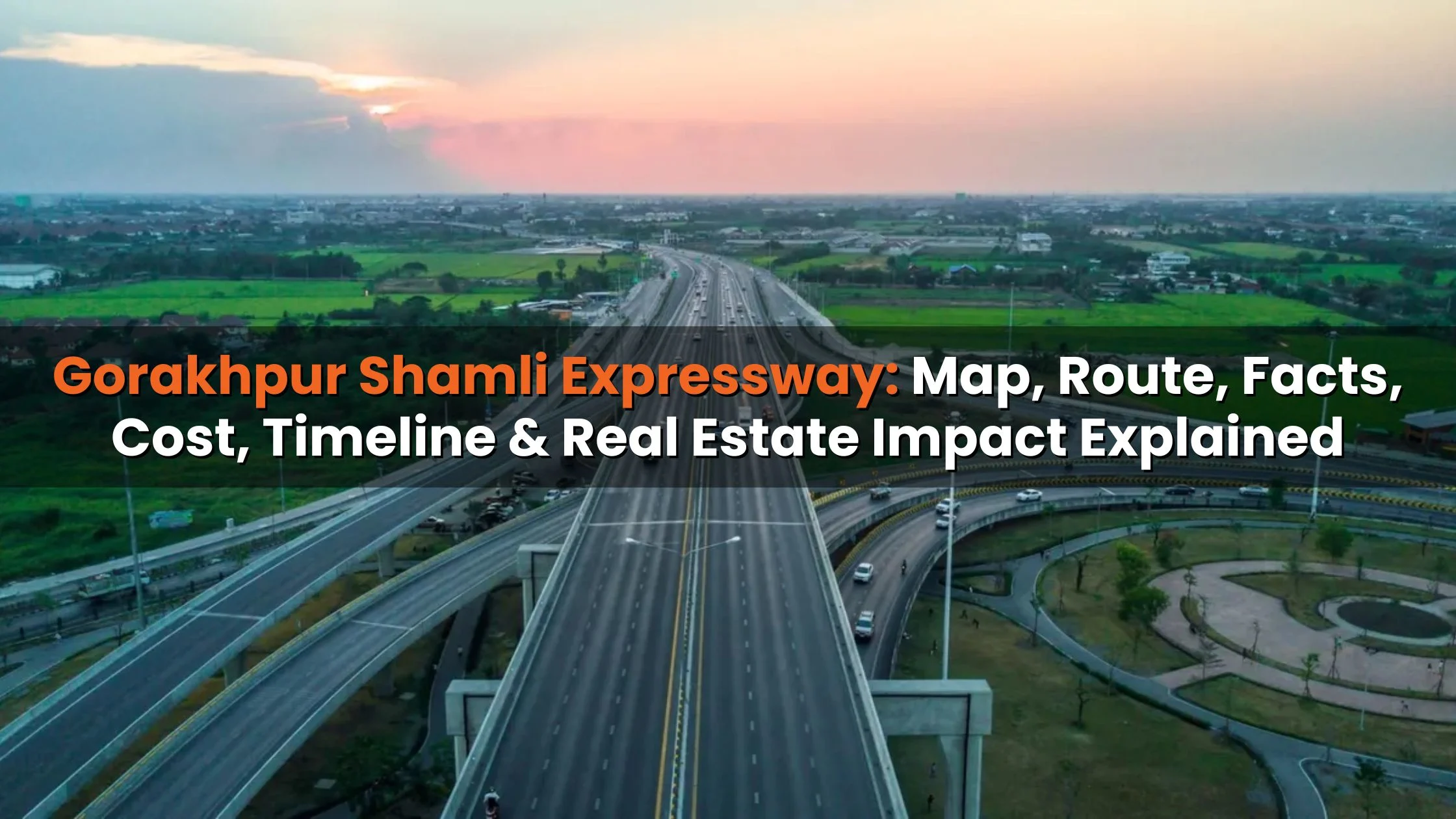Table of Content
Introduced in India on July 1, 2017, the goods and services tax (GST) law was hailed as the most significant tax reform in India since Independence. Although the GST regime does not explicitly encompass the real estate sector, the construction of complexes, buildings, civil structures, etc., falls within the definition and scope of "works contracts services" under Section 2(119) of the Central Goods and Services Tax (CGST) Act, 2017.
Nevertheless, the application of GST does not extend to the purchase of properties in completed projects. Legally, a project is considered completed when it has obtained a completion certificate (CC) from a competent authority. As per Paragraph 5 of Schedule-III of the CGST Act, 2017, the sale of land and buildings is deemed neither a supply of goods nor a supply of services if a completion certificate has been issued for the unit.
Taxes on house purchase before GST
Prior to the introduction of the Goods and Services Tax (GST) in 2017, a multitude of state and Central taxes were levied on buildings throughout the different phases of a project's construction cycle. These taxes augmented the development costs for builders, and they did not have the opportunity to claim credit against this tax for offsetting their output liability. Some of the taxes that real estate developers were required to pay before the implementation of the GST included:
- Value Added Tax (VAT)
- Central Excise
- Entry Tax
- LBT
- Octroi
- Service tax, etc.
The expenses related to these taxes were passed on to the buyers by the builders. Furthermore, the intricate nature of determining the applicable rates for numerous taxes provided developers with the opportunity to manipulate figures, leading to higher charges for buyers. For an ordinary buyer, it used to be a challenging endeavor to ascertain the rates of VAT, Central Excise, Entry Tax, LBT, Octroi, and service tax applicable to property construction.
Taxes on real estate after GST launch
The Goods and Services Tax (GST) amalgamated several indirect taxes to provide a consistent system for taxpayers. Since its initiation, several modifications have been implemented concerning the category in which real estate falls within the GST regime.
Central and state taxes that GST subsumed
Central taxes
- Excise Duty
- Customs Duty
- Special Additional Duty of Customs
- Service Tax
- Central Sales Tax
- Central surcharge and cess on supply of goods and services
State taxes
- State Value Added Tax
- Entertainment Tax
- Luxury Tax
- State Excise Duty
- State surcharge and cess on supply of goods and services
- Taxes on advertisement
- Purchase tax
- Taxes on lotteries, gambling and betting

GST rate on real estate 2023
Homebuyers in India incur a GST on the acquisition of under-construction properties such as flats, apartments, bungalows, and developable land. The GST rate is 1% for properties categorized as affordable. For other properties, the GST rate stands at 5%.
GST rate on flat purchase in 2023
| Property type | GST rate till March 2019 | GST rate from April 2019 |
| Affordable housing* | 8% with input tax credit (ITC) | 1% without ITC |
| Non-affordable housing | 12% with ITC | 5% without ITC |
GST on government housing schemes
The government has clarified that under the new regime, government-led mega housing projects intended for the common man will only incur a 1% GST. These housing schemes encompass initiatives such as the Jawaharlal Nehru National Urban Renewal Mission, the Rajiv Awas Yojana, the Pradhan Mantri Awas Yojana, and the housing schemes implemented by state governments.
GST on construction services
Although real estate in India is not directly included in the scope of the GST regime, various activities and services within the sector are subject to taxation under the new regime. The following are the rates at which related activities in the construction sector are taxed under the GST regime in India:
| Under-construction home bought under the PMAY Credit-Linked Subsidy Scheme (CLSS) | 8% |
| Under-construction home bought without the subsidy | 12% |
| Works contract for affordable housing | 12% |
GST rate on building materials
The Goods and Services Tax (GST) encompasses real estate in India through works contracts and building and construction works, as all components used in the development work are subject to GST. In simple terms, the Indian construction industry falls under the purview of the new regime, facing high tax rates due to a combination of levies imposed on the purchase of various building construction materials.
GST on maintenance charges
Flat owners are liable to pay 18% GST on residential property, if they pay at least Rs 7,500 as maintenance charge to their housing society. Housing societies or residents’ welfare associations (RWAs) that collect Rs 7,500 per month per flat, also have to pay 18% tax on the entire amount. Housing societies which have an annual turnover of less than Rs 20 lakhs are, however, exempted from paying the GST. For the GST to be applicable, both the conditions should apply – i.e., each member should pay more than Rs 7,500 per month as maintenance charge and the annual turnover of the RWA should be higher than Rs 20 lakh.
The government has also clarified that the entire amount is taxable, in case the charges exceed Rs 7,500 per month per member. For example, if the maintenance charges are Rs 9,000 per month per member, the 18% GST on flats will be payable on the entire amount of Rs 9,000 and not on Rs 1,500 (Rs 9,000-Rs 7,500). Also, owners with multiple flats in the same housing society will be taxed for each unit separately.
On the other hand, RWAs are entitled to claim ITC on tax paid by them on capital goods (generators, water pumps, lawn furniture, etc.), goods (taps, pipes, other sanitary/hardware fittings, etc.) and input services such as repair and maintenance services.
GST on rent
When is the tenant liable to pay GST
Tenants registered under GST leasing a residential unit will now be required to pay an 18% tax on the rent amount, as per an amendment announced by the GST Council on July 13, 2022. This new provision is applicable to individual service providers earning more than Rs 20 lakh annually and businesses generating an income exceeding Rs 40 lakh annually. In both cases, GST registration becomes obligatory for the individual or business.
When the landlord is liable to pay GST
Under the GST regime, leasing residential property for business purposes is considered a supply of services. In this scenario, if the annual rent amount exceeds Rs 20 lakh, landlords are subject to an 18% GST on rental income. Landlords must register themselves to fulfill their GST obligations on rental income. Similarly, for the leasing of commercial properties, an 18% GST is imposed.
GST on home loan
While home loan repayment does not fall under the purview of GST for the borrower, financial institutions provide various 'services' as part of home loans. Since these are categorized as services, the application of GST becomes relevant. Therefore, when obtaining a housing loan, the bank will impose GST on the processing fee, technical valuation fee, and legal fee.
GST on a one-time maintenance deposit collected by builders
The GST is applicable to the one-time maintenance deposit that builders collect from home buyers, the Gujarat bench of the Authority for Advance Rulings (AAR) has said. According to the authority, this charge falls in the category of supply of services and is non-returnable in nature. The AAR, however, added that the GST will be deducted from the maintenance amount when this money is actually spent in carrying out maintenance works in future.
Recall here that most real estate developers collect a one-time maintenance deposit from home buyers, before the formation of the residents’ welfare associations or cooperative housing societies that take over the responsibility of maintenance from the builder. After the formation of the RWA and CHS, they become solely responsible for the maintenance work and can come up with their own set of rules for calculating maintenance charges. The builder would no longer be able to have a say in the matter.
This individual liability of home buyers is calculated on the basis of the size of the property – a certain per sq ft rate has to be paid by the home buyers. The entire amount collected from buyers as a one-time maintenance charge is then deposited into a common fund and is used for its intended purposes as and when required.
Since there has been an absolute lack of clarity on laws governing collection of this levy, there have been various instances, where disputes have arisen between buyers and developers on the applicability of GST on the one-time maintenance charge.
It has been a common practice among developers to deduct GST at the rate of 18%, right after the collection and then deposit the remaining amount into the common fund. After the AAR ruling, developers will have to deposit all the amount without any GST deduction.
Also note that builders were not liable to pay service tax on such maintenance deposits before the GST regime became applicable in 2017.
With the AAR’s ruling, RWAs and CHSs can now collect the GST from society members as and when the time to utilise this amount comes, since the builder would charge this levy initially. In essence, it is only a deferral of the payment, as far as home buyers are concerned.
GST on developable land
GST will not apply if you are investing in developable plots. This was clarified in a circular issued by the Central Board of Indirect Taxes and Customs (CBIC) on August 3, 2022, stating that plot sales do not attract GST, even if some basic infrastructure has been developed. The Karnataka AAR has also recently issued a similar order.
However, some state authorities had previously taken a different stance. For instance, in July 2022, the Madhya Pradesh Appellate Authority of Advance Ruling (AAAR) declared that land sold after development activity would attract an 18% Goods and Services Tax (GST). A comparable decision was made by the Gujarat Authority of Advance Ruling in 2021.
Before the GST regime, the sale of immovable properties was excluded from the scope of value-added tax. Thus, only direct taxes like stamp duty and registration charges were applicable during such transactions.
What is developable land?
Only plots for which the owner has secured all required permissions from local and municipal authorities for future development qualify as developable plots. Additionally, the owner must develop basic infrastructure to facilitate future development. If any or all of these activities have been undertaken on the land parcel, it would be considered developable land.
- Demarcation of plot
- Ground leveling
- Boundary wall construction
- Road construction
- Construction of overhead tanks
- Laying work of water pipelines
- Laying work of underground sewerage lines
- Setting up of water harvesting facility
- Setting up of sewage treatments plants
- Development of landscaped gardens
- Setting up of a drainage system
GST on plot
Although the sale of plots falls outside the scope of the GST regime, any minor construction on the plot would incur GST. In the event of selling such a plot, one-third of the plot's value will be exempted, and GST will be applied to the remaining two-thirds of the land's value.
GST impact on stamp duty and registration charges
Despite periodic demands, since the implementation of the GST regime, to eliminate stamp duty and registration charges on property, the government has not taken any action in this regard. Consequently, property transactions in India still incur stamp duty and registration charges. While states impose stamp duty ranging from 5% to 10%, the registration charge is either 1% of the property value or a fixed fee.
GST refund on flat purchase cancellation
Changes are anticipated in the GST law to enable homebuyers to claim a GST refund in the event of canceling a home purchase for which they have already paid the tax. Currently, there is no procedure in the new tax regime that allows unregistered entities, including homebuyers, to request a GST refund. In the 48th GST Council meeting on December 17, 2022, the Council proposed an amendment to the CGST Rules, 2017, alongside the issuance of a circular, to outline the procedure for unregistered buyers to apply for a refund in such cases.
GST is not applicable on ready-to-move-in flats; it is applicable on under-construction flats only
It's crucial to understand that the real estate sector is not encompassed by the GST. The tax rate applicable to a property building falls under the category of 'work contracts.' This is precisely why a developer cannot impose GST on the sale of ready-to-move-in homes. Once a property is completed and has obtained the occupancy certificate, it is classified as ready-to-move-in and is no longer subject to work contract taxation. In summary, GST is applicable to the sale of under-construction properties that have not yet received occupancy certificates. It's worth noting that in the previous regime, buyers were also required to pay service tax on the purchase of ready-to-move homes.
However, since the developer/owner has paid GST as part of the purchase, they eventually incorporate this expense into the overall cost of the property. This essentially means that while there is no direct GST applicability on ready homes, the buyer ultimately bears this cost in some way.
GST is not applicable on land transactions
Sale of land is also outside the purview of the GST on construction services, as the sale does not involve the transfer of any goods or services. As the cost of land is a crucial factor that determines property prices, GST provides a standard abatement of 33% of the total contract value, towards value of land for taxable real estate transactions.
How to calculate GST on under-construction flat?
Consider a scenario where a builder sells an under-construction property valued at Rs 100 to a buyer. In calculating the GST on the building, Rs 33 will be excluded as the land value, and the GST on construction will be applicable only to the remaining Rs 77.
What is affordable housing under GST?
As per the government-defined criteria, housing units valued at up to Rs 45 lakh are categorized as affordable housing. However, to qualify as affordable housing, the unit must also adhere to specific measurement limits. In a metropolitan city, a housing unit qualifies as an affordable house if it costs up to Rs 45 lakh and has a carpet area of up to 60 sqm. Metropolitan cities include Delhi-National Capital Region, Bengaluru, Chennai, Hyderabad, Mumbai-Mumbai Metropolitan Region, and Kolkata. In any other city in India, excluding the aforementioned ones, a housing unit qualifies as an affordable house if it costs up to Rs 45 lakh and has a carpet area of up to 90 sqm.
GST calculation on affordable property
Here’s a look at how to calculate GST on flats’ purchase in the affordable housing segment before and after the change in rate in April 1, 2019:
| Affordable housing | GST on affordable housing before April 1, 2019 | GST on affordable housing after April 1, 2019 |
| Property cost per sq ft | Rs 3,500 | Rs 3,500 |
| GST rate on flat purchase | 8% | 1% |
| GST | Rs 280 | Rs 35 |
| ITC benefit for material cost of Rs 1,500 at 18% | Rs 270 | Not applicable |
| Total | Rs 3,510 | Rs 3,553 |
How did GST impact luxury property?
Under the new GST rates, buyers of luxury properties will save more than they would have earlier. Here’s a look at how to calculate GST on flat purchase in the luxury segment:
| Luxury housing | Before April 1, 2019 | After April 1, 2019 |
| Property cost per sq ft | Rs 7,000 | Rs 7,000 |
| GST rate on flat purchase | 12% | 5% |
| GST | Rs 840 | Rs 350 |
| ITC benefit for material cost of Rs 13,000 at an average of 15% | Rs 126 | Not applicable |
| Total | Rs 7,714 | Rs 7,350 |
What is input tax credit (ITC) under GST?
A distinctive feature of the GST law is its Input Tax Credit (ITC) system, setting it apart from the previous tax system in India. Throughout the entire lifecycle of a housing project, a real estate developer incurs taxes multiple times on the purchase of goods and services. Under the GST regime, the builder is entitled to claim input tax credit when settling their output tax.
For instance:
If a developer has a tax liability of Rs 25,000 on the final product, and the builder has already paid Rs 21,000 as input tax while purchasing materials like steel, cement, paint, etc., in this scenario, the builder would only need to pay Rs 4,000 as output tax after adjusting the input tax credit.
GST fact-check: Did you know?
- Residential projects with up to 15% commercial space are treated as residential properties under GST.
- The effective GST on commercial property is 12%.
- You do not have to pay any GST on the purchase of plots.
- You do not have to pay any GST on buying a flat that is ready-to-move-in.
- Landlords do not have to pay GST, unless the tenant is a business company.
- GST on house registration: GST does not subsume stamp duty or registration charges; you still have to pay these duties while buying a property.
- GST is applicable on the services that banks offer, as part of the home loan, including processing fee, legal fee, etc.
- GST has subsumed at least a dozen other taxes.
- Sellers increase the cost of ready-to-move-in properties, to factor in the GST cost.
- espite the applicability of GST, under-construction homes are cheaper than ready homes.
GST real estate timeline
2000
The then PM Atal Behari Vajpyee sets up a panel to design a GST model.
2004
The then finance ministry’s advisor Vijay Kelkar recommends that GST replace the existing tax system.
2006
Former finance minister P Chidambaram sets April 2010 as the deadline for GST implementation in his budget speech.
2011
March 22: Government tables 115th Constitution Amendment Bill in the Lok Sabha, to introduce the GST.
2014
December 18: Cabinet approves 122nd Constitution Amendment Bill to GST.
December 19: FM Arun Jaitley introduces the Constitution (122nd) Amendment Bill in the Lok Sabha.
2015
May 6: Lok Sabha passes GST Constitutional Amendment Bill.
May 12: The Amendment Bill is presented in the Rajya Sabha.
2016
September 2: 16 states ratify the GST Bill; President gives assent to the Bill.
September 12: Cabinet clears formation of the GST Council.
September 22-23: The GST Council meets for the first time.
November 3: The Council decides on a four-slab tax structure of 5%, 12%, 18% and 28%, plus additional cess on luxury and sin goods.
2017
July 1: GST is rolled out; 8% rate proposed on under-construction properties.
2019
February 24: Government reduces the GST rate on under-construction property to 5% from 12%, and 1% from 8% on affordable housing.
May: Government gives builders a one-time option to choose between the old GST rate with ITC or new lower GST sans ITC. Those not making a choice are automatically switched to the new regime after May 20.
How did GST impact real estate sector?
Since the introduction of GST in 2017, investing in under-construction properties has become more straightforward for the common man. This is primarily due to the cessation of the old tax regime, which previously imposed multiple taxes on such investments. The unified tax regime provides buyers with clarity regarding the types of taxes they would need to pay at the time of home purchase.
Investment in affordable properties has also received a significant boost with the government streamlining GST rates on affordable properties.
From the developers' perspective, the GST regime has been highly supportive. Under the previous regime, developers were obligated to pay various taxes such as VAT, Central Excise, Entry Tax, LBT, Octroi, Service Tax, etc. The credits of these taxes were not freely available against the output tax liability. However, the GST regime allows for Input Tax Credit (ITC) eligibility on construction and other services procured, thereby eliminating the inefficiencies caused by the cascading effect of taxes, as noted in a report by consulting giant PwC India.
Also Read: Maximize Your Rental Income & Minimize Tax: Top Strategies to Save on Taxes







_1767164061.webp)


Ans 1. A Real Estate Project in which the carpet area of the commercial space is not more than 15% of the total carpet area of all apartments in the project.
Ans 2. An affordable residential apartment is one in which: Carpet area is up to 60 square meters for metropolitan cities; Carpet area is up to 90 square meters for cities and towns other than metropolitan cities and; The gross amount charged by the builder is not more than Rs.45 lakh. For example, Mr A is a beneficiary of PMAY CLSS and the carpet area of his house being constructed is 150 square meters. Is he eligible for a new tax rate of 1%? Yes, only if the developer has not exercised the option to pay tax at old rates. Here, the area in the square meter is greater than the prescribed limits but it is still considered an affordable residential apartment because Mr A is a beneficiary of PMAY CLSS.
Ans 3. You have to consider all the charges, including preferential location, parking, development, common facility charges etc., while calculating the Rs 45 limit. However, you can exclude the stamp duty, maintenance charges, deposits for maintenance of the apartment, and maintenance of common infrastructure.
Ans 4. If you have bought a single residential house before obtaining the completion certificate from the competent authority, you have to pay GST. However, if the seller has received the completion certificate before the agreement, you don’t have to pay GST.
Ans 5. GST@ 1% will be applicable if your single residential house falls under an affordable residential housing project. If it is not an affordable residential housing project, you should pay GST@ 5%.
Ans 6. Yes, in the case of an ongoing project, a promoter or builder can exercise a one time option to pay tax at old rates. This should be communicated to the Jurisdictional Commissioner by 20th May 2019 in the prescribed form. If not communicated, it is deemed that they have opted for making tax payments at new rates. Also, modification of options is not allowed once submitted.
Ans 7. In case invoices issued by a promoter prior to 20th May 2019 are not in accordance with the option of tax rates exercised by him, a debit/credit note can be issued to bring the transaction in conformity with the final option exercised by him.
Ans 8. Suppose the buyer paid a gross booking amount of Rs.10 lakhs before 1st April 2019. The developer paid GST of Rs.1.2 lakhs (12% of Rs.10 lakhs) on the booking amount. In this case, a developer can make a tax adjustment of Rs.1.2 lakhs at the time of cancellation provided the entire amount is refunded to the buyer on or before September 2019.
Ans 9. You don’t have to pay GST when buying a flat after obtaining the completion certificate or occupational certificate.
Ans 10. The buyer has to pay GST to the builder at the time of purchase.
Ans 11. Yes, the buyer has to collect the GST from customers.